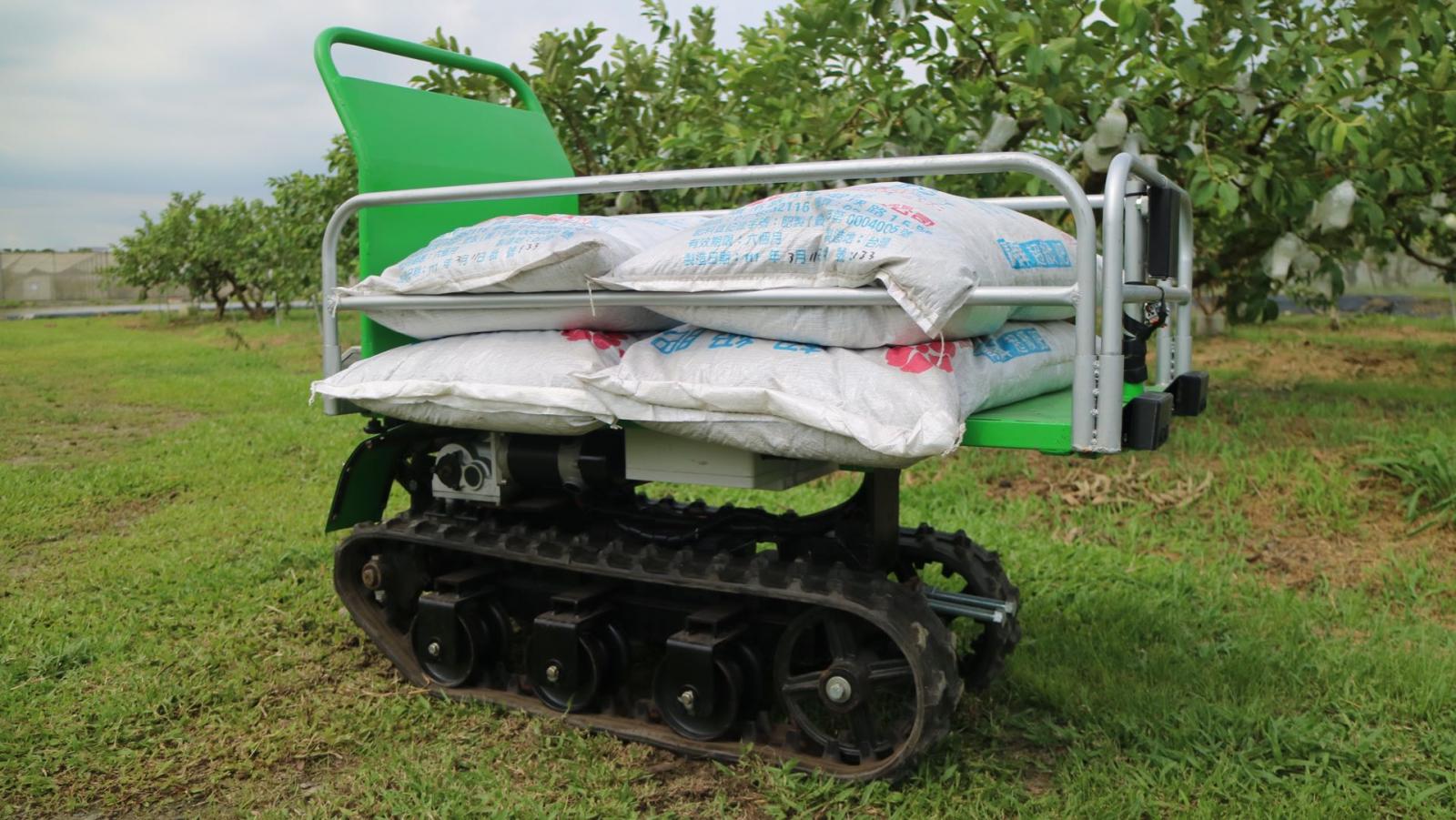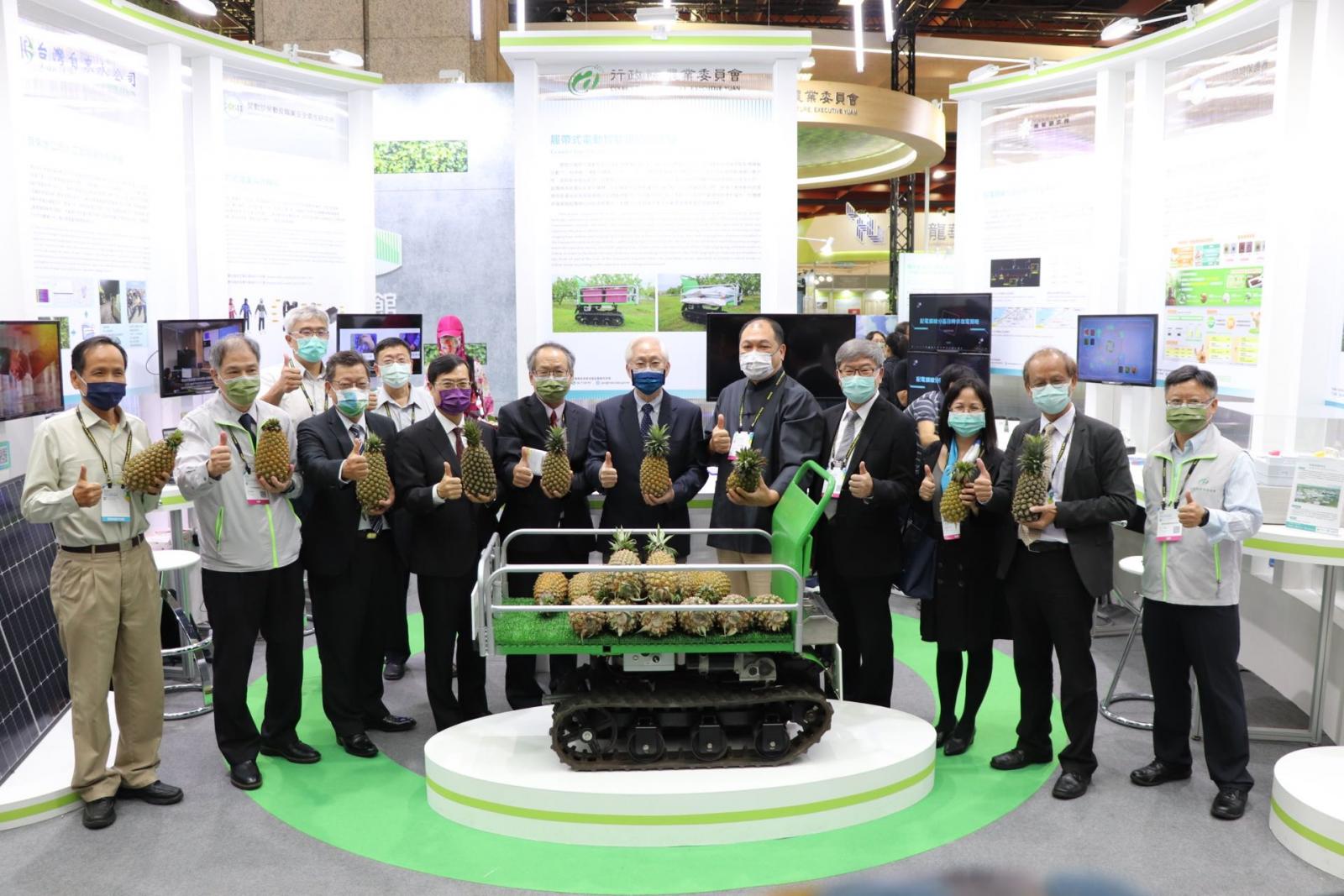107 Climate Change Adaptation Technologies Displayed with the Goal of Building a Sustainable Taiwan
The Council of Agriculture (COA) of the Executive Yuan did overall planning for the “Sustainability Pavilion” at the “2022 Taiwan Innotech Expo,” which was jointly staged by five ministries and seven agencies. The Expo opened today (October 13) at Exhibition Hall 1 of the Taipei World Trade Center and will last for three days. The Pavilion includes three main themed areas: “Carbon Reduction and Sequestration,” “Green Energy Technology,” and “Circular and Regenerative Technology.” In total 107 innovative technologies for adapting to climate change are on display in the Pavilion, of which 47 are being exhibited by the COA. These include new plant varieties adaptive to the changing climate, automated mechanical production technology, and circular reuse of agricultural by-products. The COA has undertaken research in a variety of areas to ensure Taiwan’s food security and a stable supply of agriproducts. It is hoped that through the hard work and abundant achievements of its R&D institutions that Taiwan can attain the goal of “net zero sustainability and resilient collective prosperity.”

The COA states that the Sustainability Pavilion brings together R&D results created through collective efforts and aimed at mitigating climate change; these results were achieved by government agencies all working in their respective areas of expertise. These agencies include the Environmental Protection Administration (EPA); the Institute of Labor, Occupational Safety and Health (ILOSH) of the Ministry of Labor; the Institute of Nuclear Energy Research (INER) of the Atomic Energy Council; and the Bureau of Energy (BOE), the State-owned Enterprise Commission, and the Industrial Development Bureau (IDB), all three of which are under the Ministry of Economic Affairs. Of the 107 technologies on display, seven “highlight technologies” were selected: a “crawler type electric intelligent transport machine” (COA), “technology for developing coffee grounds as functional feed” (EPA), “multifunctional agricultural harvesting assistive devices” (ILOSH), the “hydrogen energy development platform” (BOE) (a breakthrough technology for green energy), “high strength and weather resistant engineer plastic—solar power plastic frame” (IDB), “divisional section transfer power restoration strategy of distribution feeder” (INER) (which will reduce wastage of resources), and “artificial intelligence leak detection” (Taiwan Water Corporation).

The COA explains that in order to reach targets for reduction of greenhouse gases and to deal with the shortage of agricultural labor, there is a trend towards use of electric intelligent agricultural machinery. Take for example the “crawler type electric intelligent transport machine” developed by the Kaohsiung District Agricultural Research and Extension Station of the COA. It is small in size, at only 135 centimeters in length and 60 centimeters in breadth, which makes it easy to move and turn around in the narrow spaces in farm fields. Despite its small size, however, it has carrying capacity of 200 kilograms and moreover automatically follows users around, thereby enabling it to sharply reduce the workload of farmers.

The COA reiterates that the most direct threat faced by agricultural production is the impact of extreme weather, so it is more important than ever to plan responses in advance to maintain the resiliency of agriculture in Taiwan and uphold the rights and interests of farmers. We welcome businesses from all sectors and the general public to visit the “Sustainability Pavilion” at the “2022 Taiwan Innotech Expo” in Exhibition Hall 1 of the Taipei World Trade Center from October 13 to 15 to see the numerous mature innovative technologies on display and to appreciate the latest R&D achievements and technologies in the agricultural sector in Taiwan. Let’s all witness the progress toward sustainable agricultural development together.

